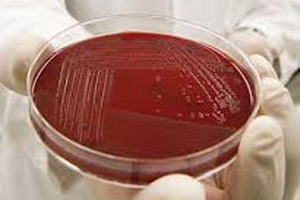Campylobacter research reveals potential for vaccine

A potential vaccine for Campylobacter has been identified in research funded by USPOULTRY and the USPOULTRY Foundation.
Campylobacter jejuni, commonly associated with poultry, causes human campylobacteriosis. Although many strategies for reducing C. jejuni contamination in poultry have been examined, there are currently no practical intervention means available for the poultry industry to effectively reduce the contamination of C. jejuni during production and processing. Therefore, research for practical on-farm interventions is an urgent need. In the proposal, the researchers attacked this problem by development of C. jejuni subunit proteins as potential vaccines for broilers.
The hypothesis of the proposed study was that expression of a battery of C. jejuni proteins involved in colonization has the potential for discovery of novel antigen(s) that can be used for in ovo vaccination to reduce the bacterium in broiler chicken gastrointestinal systems. The specific objectives of this proposal are to (1) construct a system for expressing large amounts of important C. jejuni proteins, (2) produce and purify the recombinant C. jejuni proteins, (3) assay the immune response in broiler chickens against these C. jejuni proteins, and (4) conduct vaccination experiments with the C. jejuni proteins.
The study found that this protein is present in all 21 C. jejuni isolates and is immunogenic in broilers. Therefore, this protein could make an excellent candidate for further evaluation as a vaccine to reduce Campylobacter in poultry. In addition, antibodies to this protein may be used for as a tool to monitor the Campylobacter status during poultry production.
Currently, C. jejuni is regarded as a commensal in the chicken gut intestine, which does not harm chickens. Studies, however, demonstrated that broiler sera reacted to a variety of Campylobacter proteins, suggesting that chickens had been exposed to or infected with this microorganism, and consequently developed antibodies against it.
Further, the research showed antibodies against the FliD protein were widespread in poultry populations. Therefore, control of Campylobacter exposure through vaccination of chickens is a logical approach to Campylobacter control, and the FliD protein is a good vaccine candidate. Further studies must be done to evaluate the use of this protein by in ovo application to determine its potential practical use and efficacy.
For further details see the report Development of Campylobacter jejuni Proteins as in ovo Vaccines for Broiler Chickens by Hung-Yueh Yeh, Kelli L. Hiett, J. Eric Line and Bruce S. Seal.













